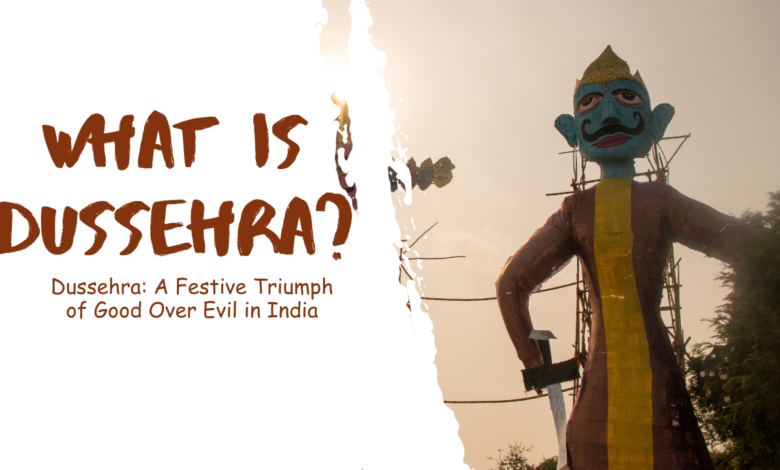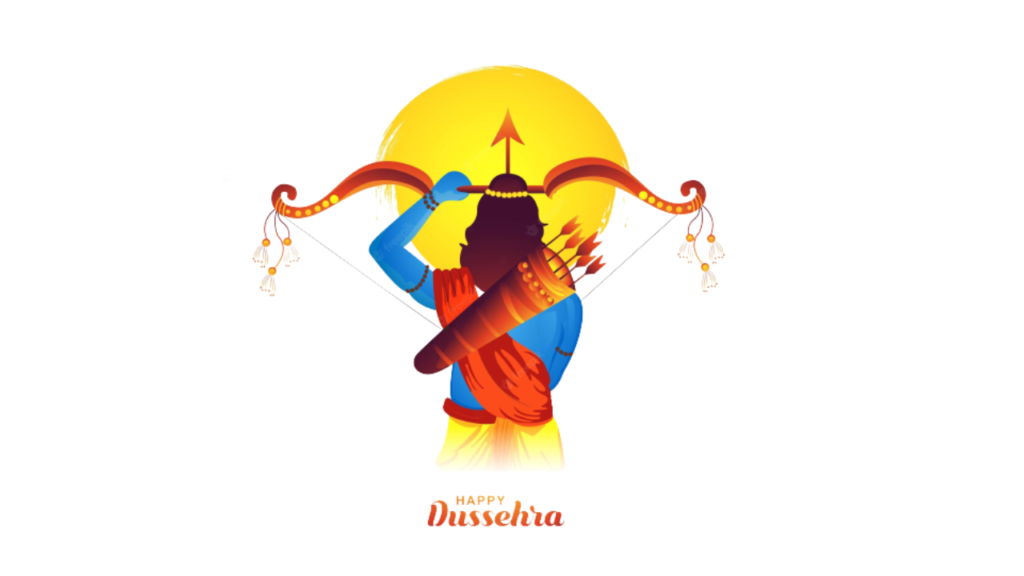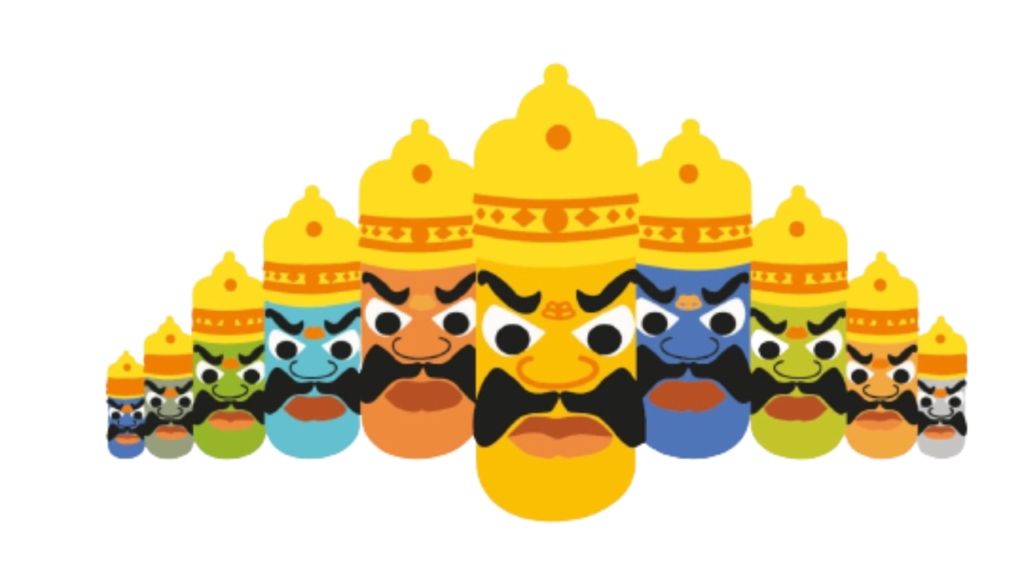
What Is Dussehra?
Dussehra, also known as Vijayadashami, is a major Hindu festival celebrated in India and other parts of the world. It marks the victory of good over evil and is one of the most significant festivals in the Hindu calendar.

Introduction
Dussehra, also known as Vijayadashami, is one of the most significant and widely celebrated festivals in India. It holds a special place in the hearts of millions of people, transcending regional and religious boundaries. This festival marks the triumph of good over evil, and its significance is rooted in both mythological and historical narratives. In this article, we will explore the meaning, traditions, and the cultural importance of Dussehra.
The Mythological Significance
The legend of Dussehra primarily centers around the Hindu epic, the Ramayana. According to the Ramayana, Lord Rama, an incarnation of the god Vishnu, battled the demon king Ravana, who had abducted Rama’s wife, Sita. The battle lasted for ten days, culminating in the victory of Lord Rama on the tenth day, which is celebrated as Dussehra. This victory symbolizes the triumph of righteousness (dharma) over evil (adharma), and it serves as an enduring source of inspiration for millions.
Dussehra also has connections with the Mahabharata, another revered Hindu epic. It is believed that the Pandavas, who had hidden their weapons in a Shami tree (Prosopis cineraria) during their year of exile, retrieved them on the day of Dussehra. As a result, the custom of worshipping the Shami tree on this day emerged, adding to the festival’s significance.
Regional Variations
Dussehra is celebrated with distinct regional flavors across India. In North India, the most famous observance is the Ramlila, a dramatic reenactment of the Ramayana’s pivotal episodes. Large effigies of Ravana, his brothers, and his demon army are burnt in open grounds, signifying the destruction of evil forces. In the eastern state of West Bengal, Dussehra coincides with Durga Puja, a celebration of the goddess Durga’s victory over the demon Mahishasura. In the southern state of Mysore, Dussehra is marked with an opulent and grand procession featuring a lavishly decorated idol of Goddess Chamundeshwari.
Also Check
- Islamic Names For Boys
- Is Buddha A Philosopher?
- Diwali Decorations
- Why is Diwali called the festival of lights?
- Did Jesus have a wife?
Traditions and Customs
- Ramlila: As mentioned earlier, Ramlila is a significant tradition in North India. It involves the enactment of Lord Rama’s story through plays and performances, often culminating in the burning of Ravana’s effigies.
- Vijayadashami Puja: In many parts of India, people perform special pujas (rituals) on this day. It is considered an auspicious time to start new ventures, undertake educational pursuits, or make major life decisions.
- Worship of Goddess Durga: In West Bengal and some other parts of India, Dussehra coincides with Durga Puja, a grand celebration that involves the worship of the goddess Durga and the immersion of her idols in water bodies.
- Aptaputra: In the Jain tradition, Dussehra is celebrated to commemorate Lord Mahavira’s attainment of nirvana. It is a day for introspection, prayer, and the recitation of religious texts.
- Dussehra Fairs: Many towns and cities organize fairs and cultural events during this time, showcasing traditional arts, crafts, and local cuisine. These fairs are a delightful aspect of the festival, bringing communities together.
Cultural Significance
Beyond its religious and mythological roots, Dussehra carries cultural significance in India. It is a time for families to come together, exchange gifts, and seek blessings from elders. The festival promotes the values of good governance, truth, and righteousness, which are celebrated in the epic tales associated with it. It also reinforces the importance of unity and the ultimate victory of good intentions.
In Conclusion
Dussehra, the festival of victory, is a beautiful celebration of good over evil, drawing from the rich tapestry of Indian mythology and history. It unites people from diverse backgrounds and regions, emphasizing the eternal values of truth, righteousness, and justice. Whether you participate in Ramlila, worship Goddess Durga, or simply exchange sweets and well-wishes with loved ones, Dussehra serves as a reminder that the light of goodness will always triumph over the darkness of evil.

(FAQs) about Dussehra:
What is Dussehra?
Dussehra, also known as Vijayadashami, is a major Hindu festival celebrated in India and other parts of the world. It marks the victory of good over evil and is one of the most significant festivals in the Hindu calendar.
When is Dussehra celebrated?
Dussehra is celebrated on the tenth day of the Hindu calendar month of Ashwin, which typically falls in September or October. It usually occurs 20 days before Diwali.
Why is Dussehra celebrated?
Dussehra commemorates the victory of Lord Rama over the demon king Ravana, as narrated in the Hindu epic, the Ramayana. It symbolizes the triumph of righteousness and the defeat of evil.
How is Dussehra celebrated?
Dussehra is celebrated with great enthusiasm and involves various customs and traditions. People often participate in processions, reenactments of the Ramayana, and the burning of effigies of Ravana. It is also a time for cultural performances, music, and dance.
Are there regional variations in Dussehra celebrations?
Yes, Dussehra is celebrated differently in various regions of India. In the northern parts of the country, it is associated with the Ramlila performances, while in the southern regions, it is observed as the victory of Goddess Durga over the buffalo demon Mahishasura. In the eastern state of West Bengal, it coincides with Durga Puja.
Is Dussehra a public holiday in India?
Yes, Dussehra is a public holiday in India. Schools, offices, and many businesses are closed on this day to allow people to participate in the festivities and celebrate the occasion with their families.
What role does the burning of Ravana effigies play in Dussehra celebrations?
The burning of Ravana effigies is a symbolic act representing the destruction of evil and the victory of good. It is an essential part of the Dussehra celebration, particularly in the northern parts of India, where it is a grand spectacle.
Are there any specific rituals associated with Dussehra?
People may observe certain rituals such as visiting temples, exchanging gifts and sweets, wearing new clothes, and seeking the blessings of elders during Dussehra. Some also perform special pujas or ceremonies at home.
What is the significance of the word “Vijayadashami”?
“Vijayadashami” is another name for Dussehra. The term “Vijayadashami” translates to “the tenth day of victory” and signifies the triumph of good over evil, with “Vijaya” meaning victory and “Dashami” denoting the tenth day.
Is Dussehra a religious festival only for Hindus?
While Dussehra is a predominantly Hindu festival, it is also celebrated by people of other religions and cultural backgrounds, as it represents universal themes of victory over evil and the importance of righteousness.